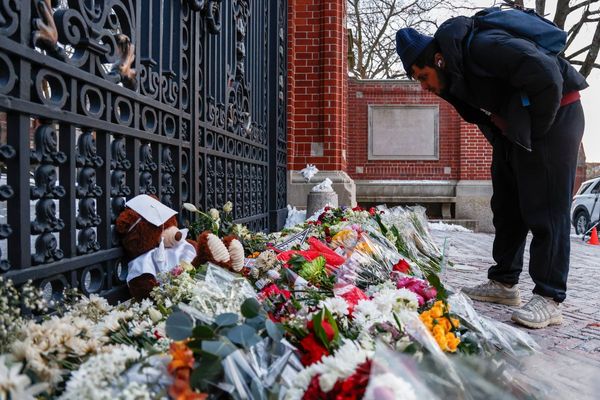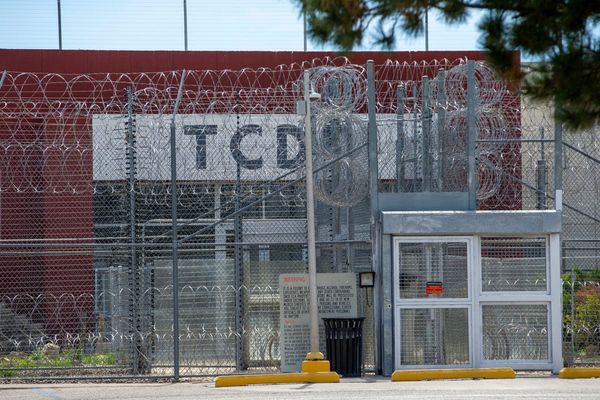
“Which bits of the Tube network will have trains on this particular strike day?” That was one of my daily tasks over the past week. As you will know, members of the RMT union working for the London Underground walked out and brought the capital to a gridlocked halt for the best part of the week. Almost all of the Tube network was shut down, but each day, a few random stretches would open.
Mostly, they were the outermost reaches of the network, such as the couple of stops between Arnos Grove and Cockfosters on the Piccadilly line. But on Tuesday, I was able to complete a loop of central London on the briefly resurrected Northern line. And on the last full day of the strike, my bingo card was completed by the Metropolitan line from Baker Street to Harrow-on-the-Hill.
I just had to experience the journey. Baker Street was one of the seven original stations on the world’s first underground passenger railway, from Paddington to Farringdon, which opened in 1863. With almost all the platforms locked, you did not need to be the celebrated resident of 221b Baker Street, Sherlock Holmes, to work out that the train was leaving from platform 4.
Almost no one was on board; news of the transportational reincarnation had not travelled far. At Finchley Road, though, I was joined by a pigeon who padded and pecked around the floor of the train before flying off at Northwick Park: a classy commute.
On arrival at Harrow-on-the-Hill, among the handful of passengers going through the ticket barrier was a young fare dodger, who prised open the gates and walked through unchallenged. It all felt rather tokenistic on the part of Transport for London (TfL). Better, perhaps, to give people the certainty that there will be no trains rather than run pop-up Tubes that few use.
The RMT, though, will be delighted with the success of the shutdown in pursuit of a 32-hour, four-day week. “Workers are being rostered into exhaustion,” the union says. General secretary Eddie Dempsey says shift work reduces the life expectancy of Tube workers by 10 years. But TfL says the aspiration for a cut in hours is unaffordable and impractical.
Whatever your view on the merits of each side, the way that the RMT has choreographed the strike has been extraordinarily efficient. The union chose key groups of workers to walk out on successive days: some control staff on Sunday, train and station workers on Monday and Wednesday, signallers on Tuesday and Thursday.
Employees have lost a maximum of two days’ pay while closing down the network between Sunday evening and Friday morning. And consider the days when they are not striking but their colleagues are. For many staff, there was simply no work to do for two or three days: a week off, mostly on full pay.
I calculate the strikers collectively lost £2m in wages. The lost revenue to TfL: £40m (based on usual Tube revenue of £50m in a week, but with some travellers shifting to other TfL modes of transport).
The wider economic damage was immense. UKHospitality says its members lost £110m in revenue to hotels and restaurants. The Centre for Economics and Business Research calculated the strike caused a £230m hit to the wider economy. That is almost £40,000 of harm caused by each RMT member who voted for a strike, which indicates immense industrial power. Only French air-traffic controllers (who will be striking again next Thursday and Friday) can cause so much damage per striker.
With no sign of the two sides moving towards a compromise, the success of the strike is likely to encourage more industrial action, following the same pattern. Bear in mind, Mr Dempsey is filling the considerable shoes of the closest the union movement has come to a rock star in the past few years: former RMT leader Mick Lynch. He wants to make a name for himself.
Yet increasing the pressure on TfL comes with risks attached. An interesting academic study of a previous Tube stoppage, entitled “The Benefits of Forced Experimentation”, concluded: “About five per cent of commuters found a better route to work thanks to the strike.”
TfL’s coffers are already depleted by £40m as a result of last week’s strike. Diverting one in 20 of the London Underground’s core market to Thames Clippers (which saw a 70 per cent rise in traffic during the stoppage) or rent-it-here/leave-it-there bikes will hit revenue for years to come.
Shrinking the size of the cake while demanding an ever-bigger slice of it is a bold strategy. But no doubt RMT members on the railways, and transport unions more broadly, will learn from the success of last week’s high-efficiency Tube strike.
My underground adventure from Baker Street – podcast
London bus strike partly called off this weekend – but some routes still affected
Tube strikes today: When are they and which lines are affected?
I’m a travel expert and this is how I get around London during tube strikes
How to save up to 60% on your next cruise holiday
This Broadway-themed cruise goes behind the scenes of Ever After the Musical
Tourist ‘T-plates’ encouraged for drivers in Scottish Highlands







